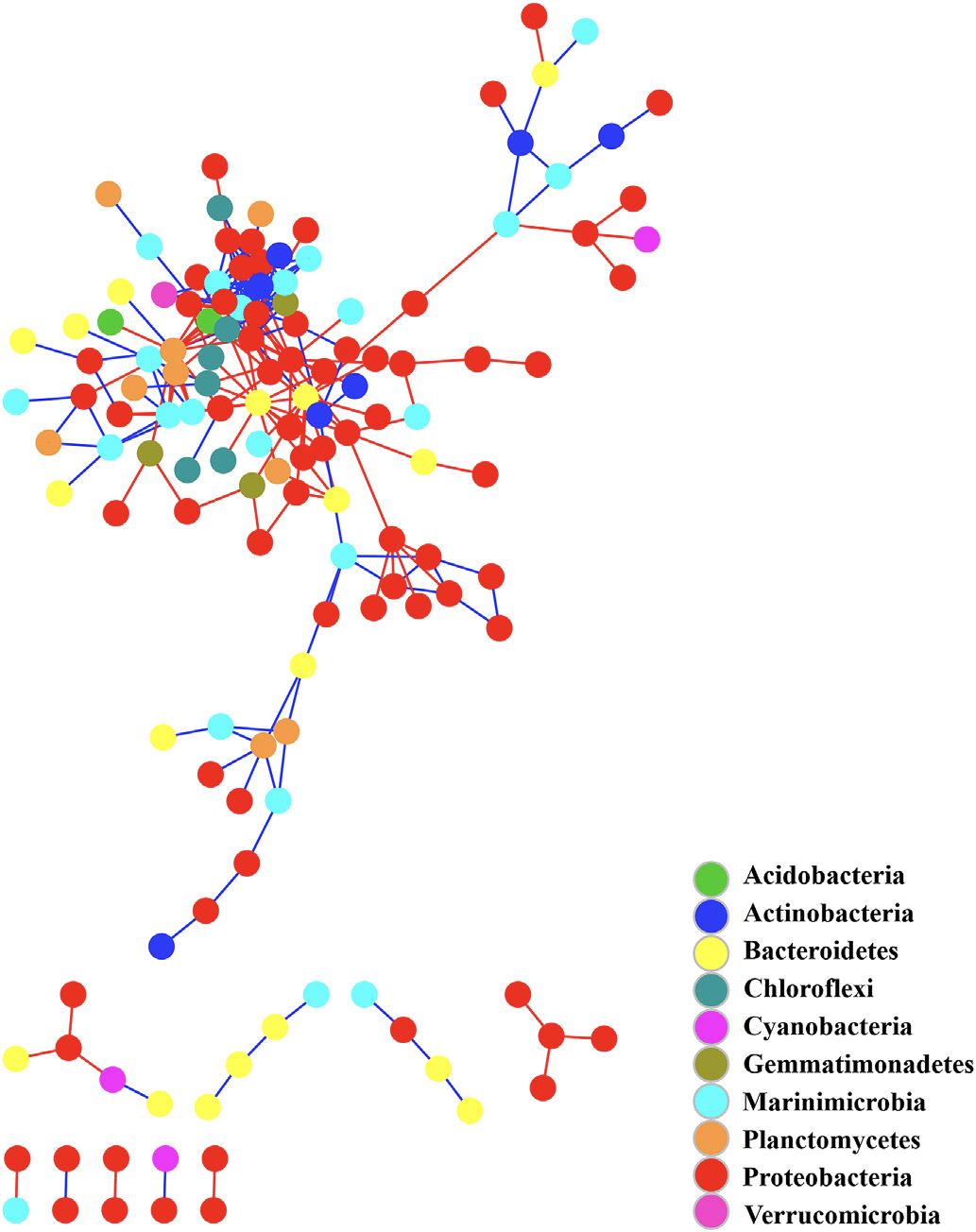Diurnal variations of the microbial community in mesopelagic fish habitats of the northern slope of the south China sea
The marine microbial community profoundly influences biogeochemical cycles. On the northern slope of the South China Sea (SCS), a considerable reservoir of mesopelagic fishes that present diurnal vertical movement (DVM) as a diel habit has been discovered. To investigate the microbial community and its potential effects on nutrient conversion in this mesopelagic fish habitat, samples were collected throughout the water column every 6 h to monitor changes over the diel cycle and subjected to high-throughput sequencing of the bacterial and archaeal 16S rRNA genes. The bacterial diversity was high and stratified. Most of the bacteria were R-strategists, which indicates strong dynamics. The dominant bacteria were aerobic or facultatively anaerobic chemo-organotrophs, e.g. Flavobacteriaceae, SAR11, Alteromonadales, and Pseudomonadales, whereas Cyanobacteria was detected throughout the water column in rather low abundances. In deeper layers (≥200 m), Deferribacterales, which are typical nitrate reducers, increased in abundance after fish digestion and defecation, were correlated with the DVM. The archaeal diversity was extremely low in areas where Marine Group I appeared as the absolute dominant group throughout the entire water column, and this group presents a high ammonium oxidizing potential. The microbial community structural profile suggested that bacteria and archaea played separate roles in the nitrogen cycling process, which was correlated with the fish activity. Moreover, the protein digesters became abnormally more abundant in the deep water at night, which was likely stimulated by the fecal matter and detritus from fish. Our results provide insights into the spatial and temporal distribution of the microbial communities in the SCS, particularly in relation to mesopelagic fish, and thus will be of assistance for estimating the ecological impact of these communities on SCS fish and fisheries based on the enhanced carbon export that occurs via the diel vertical migration of mesopelagic fish.

Calculated bacterial interactions in the water samples. Connections between nodes indicate positive (red) or negative (blue) interactions in terms of population.
Reference:
Yu Zhang, Ye Lu, Jiahua Wang, Lisa Xie, Lei Xu, Ying He, Xiang Xiao, Jun Xu. (2019). Diurnal variations of the microbial community in mesopelagic fish habitats of the northern slope of the south China sea. Deep Sea Research Part II: Topical Studies in Oceanography 167, 55-61.
Link: www.sciencedirect.com/science/article/abs/pii/S0967064518300596


 loading......
loading......